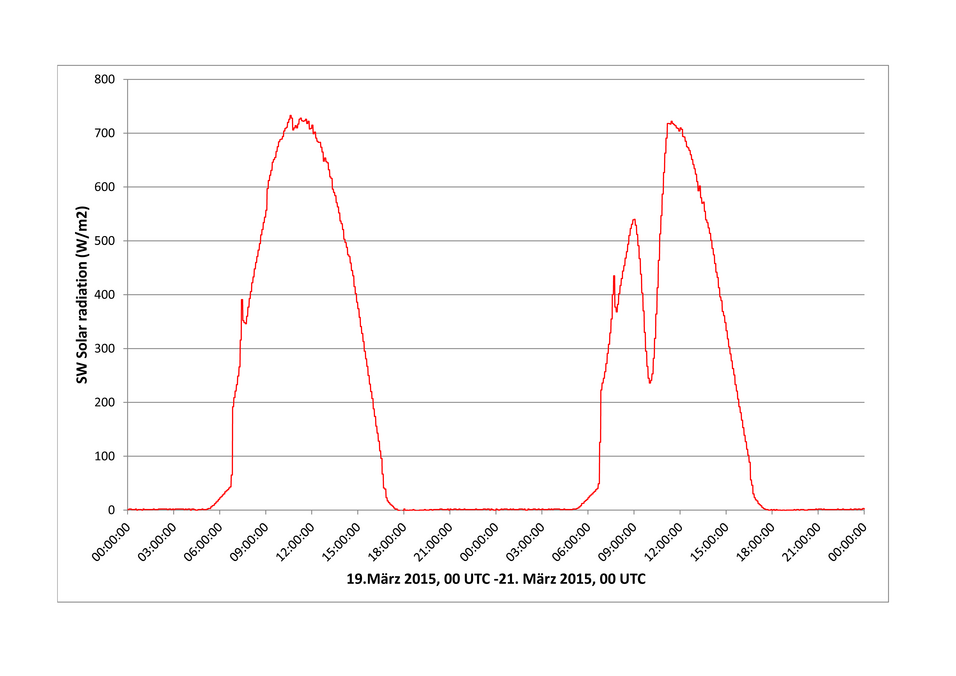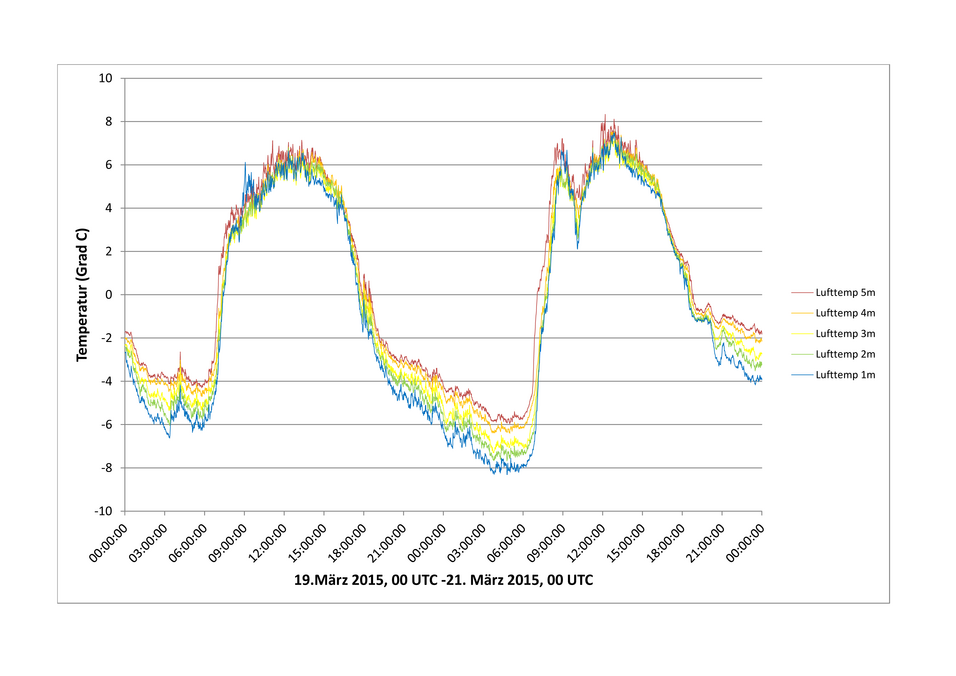The IMGW runs the sensor lift system at Trafelberg near Muggendorf/Lower Austria. It reports verical profiles of temperature, humidity and wind continuously from 1m up to 5m above ground. Additionally, all components of the radiation budget and the surface temperature by use of an infrared sensor are measured. Figure 1 shows the short wave incoming radiation for the partial eclipse of the sun. The decrease of the radiation to 245 W/ m2 during the maximum of the eclipse is clearly depicted. This causes a drop in temperature for 4 to 5 degrees Celsius (figure 2). The decrease was stronger near the ground due to the existing snow pack. This leads to the build-up of a short-term temperature inversion during the day .


